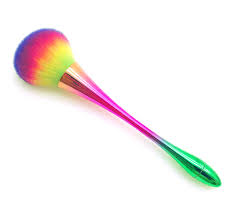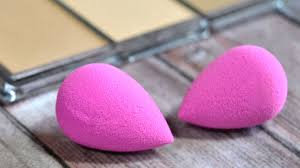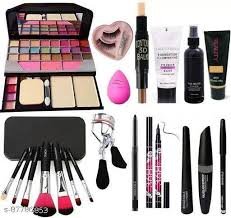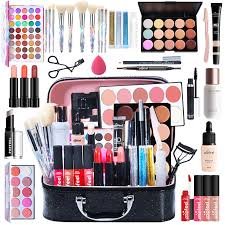Should I use foundation brush or blender? No.1 brush
Whether to use a foundation brush or blender (such as a makeup sponge) ultimately depends on your personal preference and the type of foundation you are using.

A foundation brush can be a great choice if you prefer a precise and controlled application of foundation. It can also be helpful if you are using a liquid or cream foundation that requires blending and smoothing onto the skin. A foundation brush can help you achieve a flawless and airbrushed finish, as well as help to minimize streaks and uneven application.
On the other hand, a blender (such as a makeup sponge) can be a great choice if you prefer a more natural and sheer application of foundation. It can also be helpful if you are using a thicker or heavier foundation that requires blending and buffing into the skin. A blender can help you achieve a seamless and natural-looking finish, as well as help to blend out any harsh lines or edges.

Ultimately, it’s up to you to decide which tool you prefer based on your personal preferences and the type of foundation you are using. Some people also like to use both a foundation brush and a blender, depending on the area of the face they are applying foundation to.
What is Foundation Brush?
A foundation brush is a type of makeup brush that is specifically designed to apply liquid or cream foundation to the face. It is typically made of synthetic bristles that are densely packed together and tapered to a point, allowing for precise application and blending of foundation onto the skin.
Using a foundation brush can provide several benefits over other application methods, such as using your fingers or a sponge. One of the main advantages is that it allows for more even coverage, as the brush can distribute the foundation more evenly across the skin. It can also help to minimize streaks and avoid a cakey or heavy-looking finish, as the bristles can blend the foundation seamlessly into the skin.
To use a foundation brush, it is typically recommended to start with a small amount of foundation and build up coverage as needed. The brush should be dipped into the foundation and then applied to the face in small, circular motions. It is important to blend the foundation well, particularly around the edges of the face and along the jawline, to avoid any harsh lines or demarcations.
There are several different types of foundation brushes available on the market, each with its own unique shape and design. Some of the most common types include:

- Flat Foundation Brush – This type of brush has a flat, rectangular shape with densely packed bristles. It is ideal for applying foundation to larger areas of the face, such as the forehead and cheeks.
- Round Foundation Brush – This brush has a rounded shape with tapered bristles, making it ideal for blending foundation into smaller areas, such as around the nose and mouth.
- Kabuki Brush – This type of brush has a large, fluffy head with densely packed bristles. It is ideal for applying powder foundation, but can also be used with liquid or cream foundation for a more full-coverage finish.
- Stippling Brush – This brush has a duo-fiber design, with both long and short bristles. It is ideal for achieving a natural-looking, airbrushed finish with liquid or cream foundation.

When choosing a foundation brush, it is important to consider the type of foundation you will be using, as well as your personal preferences and the areas of the face you will be applying the foundation to. It may be helpful to experiment with different types of brushes to find the one that works best for you.
In addition to applying foundation, a foundation brush can also be used for other types of makeup application, such as contouring, highlighting, and blush. It is important to clean your foundation brush regularly to avoid the buildup of bacteria and ensure that it lasts for as long as possible.







